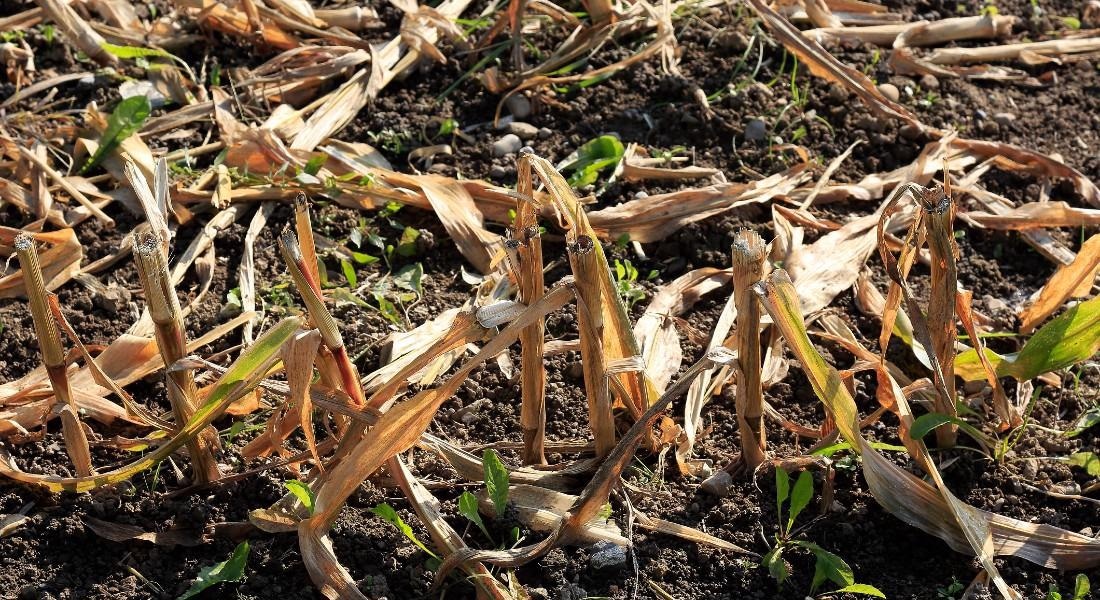Plant residue left to rot in the field has more value than being just compost. The agricultural crop residue plays a major role in sequestering carbon, which is vital for reducing global CO2 emissions.

Image Credit: Getty Images.
The study was conducted by researchers at the University of Copenhagen and other universities.
For a long time, researchers and farmers focused on methods to bind carbon to the soil. This could make food crops more nutritious and increase yields. As the carbon is converted into CO2 during its entry into the atmosphere, there is a major benefit in capturing carbon in the soil as well.
According to Denmark’s Green think Tank, CONCITO, a large amount of carbon gets into the atmosphere, and this may cause a failure of the Paris Agreement goal of reducing greenhouse gas emission by 40% by 2030.
Considering this, new methods should be found to sequester carbon in the soil. A group of researchers from the University of Copenhagen and the Technical University of Munich came together to undertake a study. Through their study, they talk about the potential of simply leaving agricultural crop residues to rot in the fields.
Fragments of dead plants in soil are often considered as fast food for microbes and fungi. But our study demonstrates that plant residues actually play a more significant role in forming and sequestering carbon in the soil than what was once thought.
Kristina Witzgall, Study Lead Author and PhD Candidate, Technical University of Munich
Earlier, researchers primarily focused on carbon storage in mineral surfaces like clay. The new results, however, show the ability of plant residues to store carbon, which was also longer than assumed. This is due to the crucial processes that occur directly upon the surface of these plant residues.
We demonstrate that agricultural crop residues are absolutely central to carbon storage and that we should use them in a much more calculated way in the future. Plant residues make it possible for carbon, in all likelihood, to be stored in soil for roughly four times longer than if they aren’t added.
Carsten Müller, Study Co-Author and Associate Professor, Department of Geosciences and Natural Resource Management, University of Copenhagen
Fungi and Soil Clumps Store Carbon
To gain insights into the carbon sequestering process by plants, it is necessary to know that plant tissues already comprise carbon absorbed from the atmosphere through photosynthesis. When plant matter rots, carbon can be transferred into the soil in numerous ways.
“Our analysis shows that plant residues, as they interact with fungi, play a surprisingly large role in carbon storage. As fungi fling their white strands around plant fragments, they ‘glue’ them together with the soil. The fungi then consume the carbon found in the plant matter. In doing so, they store carbon in the soil,” explains Carsten Müller.
Apart from fungi, the study also reveals the way in which the soil structure itself can govern the amount of carbon that can be stored.
“When soil is glued together in large hard lumps by the stickiness of bacteria and fungi, plant residues are shielded from being consumed by bacteria and fungi, which would otherwise eat and then emit some of the carbon as CO2 into the atmosphere,” said Kristina Witzgall.
According to Witzgall, carbon can be stored in the soil from weeks to thousands of years; usually, the duration is about 50 years.
Reducing CO2 in the Future
The process of allowing crop residues like stalks, leaves and stubble to rot is nothing new in terms of agricultural land improvement. However, using rotten plants as a source to store carbon should be intensely considered and the strategy should be expanded.
“The fertile and climate-friendly agricultural lands of the future should use crop residue as a way of sequestering carbon. We will also be conducting experiments where we add rotten plant matter deeper into the soil, which will allow carbon to be stored for even longer periods of time,” stated Carsten Müller.
Creating better conditions for carbon sequestering in soil could enable a storage capacity between 0.8 to 1.5 Gt of carbon annually. It is to be noted that the global population has emitted 4.9 Gt of carbon in the past decade.
Overall, the findings of the study can be employed to learn the crucial role and potential of crop residues for carbon storage in the future. However, Kristina Witzgall adds that a range of initiatives is required to increase carbon sequestration, including crops that are capable of absorbing atmospheric carbon and the restoration of lost forests.
Journal Reference:
Witzgall, K., et al. (2021) Particulate organic matter as a functional soil component for persistent soil organic carbon. Nature Communications. doi.org/10.1038/s41467-021-24192-8.